High Converting Interactive Demos Tips from a Copywriting Expert

You may already know that interactive demos help buyers jump into your product and get to an “aha” moment without a lot of hassle.
But did you know there’s a way to make those demos even more effective?
Just by changing a few of the words you use in your product tour, you can supercharge your interactive demo, leading to more trials, more meetings, and more sales.
I should know. I’m a professional copywriter, and for more than two decades, I’ve helped my clients see first-hand how just a few simple tweaks can transform the effectiveness of landing pages and product pages, ads, onboarding email sequences, and more.
The good news is you don’t have to spend years in the copywriting trenches to get your interactive demo battle-ready. With the pro copywriter techniques I’m about to share — and some examples from actual Navattic customers — you, too, can turn your interactive demo into a compelling tour.
Pro Copywriter Tip #1: Start With a “Hook”
A hook is a persuasive statement or idea that immediately grabs your reader’s curiosity and — ahem — hooks them in. Copywriters use hooks to capture interest, generate attention, and motivate people to buy a product, sign up for a trial, explore further, and so on.
But you don’t have to be a copywriter to put the power of an engaging hook to work for you. Look at how Crossbeam sets up their interactive demo with not one but two hooks.
The first, “When companies work together, their data often doesn’t,” gets buyers nodding and saying, “Yes, I know exactly what you mean.”
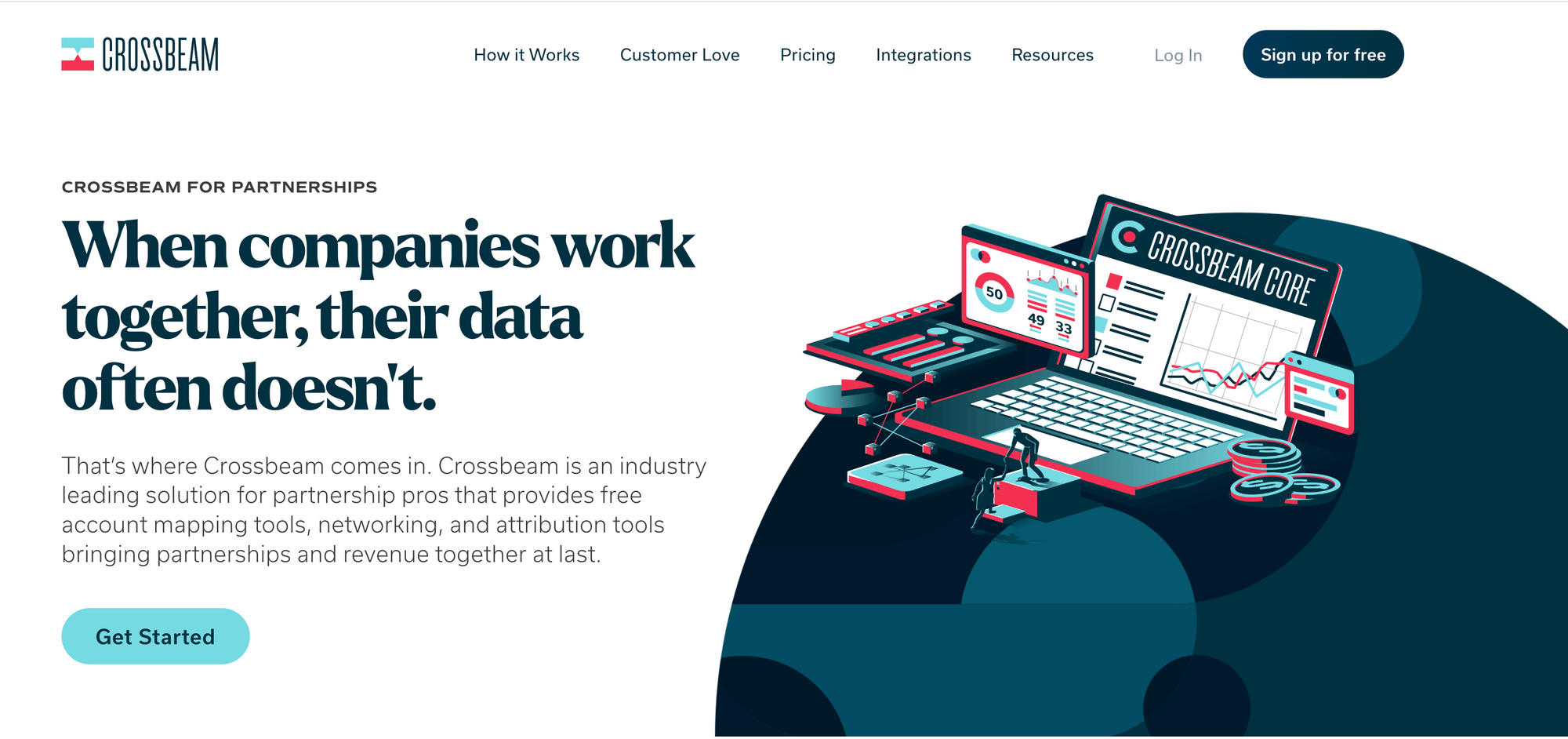
The second — “It’s like LinkedIn for partnerships. Find and connect with over 13,000 companies in just a few clicks.” — makes buyers much more likely to click into the demo. (Who wouldn’t want to know how to leverage LinkedIn for partnerships and connect with thousands of potential partners?)
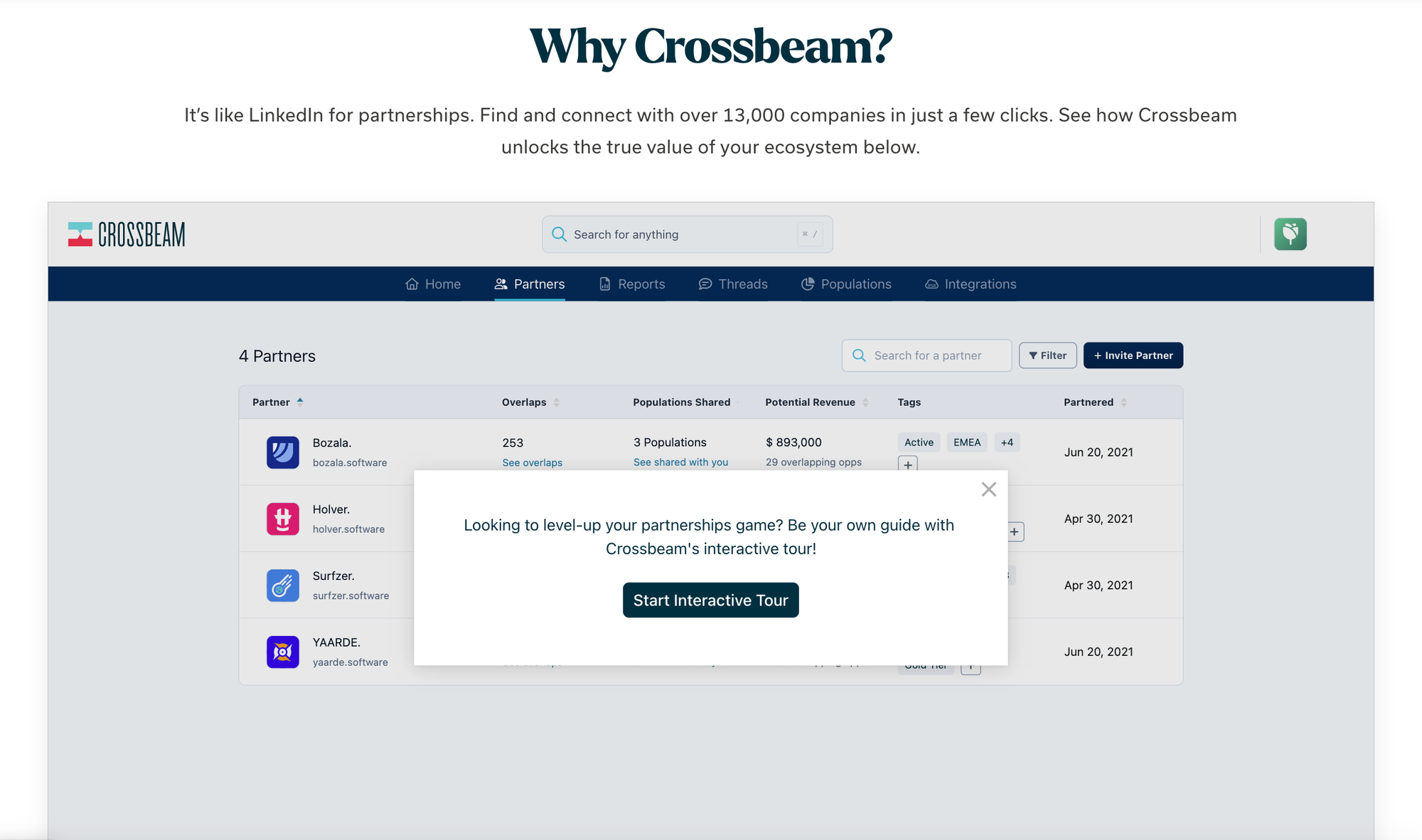
Pro Copywriter Tip #2: Use Customer-Focused Language
Good copywriters focus on their readers to build a stronger connection with them. For example, I typically push clients to think of their customers in the second person — “you,” “your company” — instead of using the third person and referring to them as “leaders,” “marketers,” “businesses,” or some other variation of whatever it is that they do.
Of course, a bias toward customer-focused language is about more than that. It’s also about painting pictures of problems and solutions that make sense to your reader — to make your interactive demo more personal, relatable, and engaging, and to help your users feel that you understand and value them.
By focusing on customer-centric language — “Don't see a log source you have? You can onboard a custom log source using one of the data transport methods.” — Panther increases the likelihood that their audience will be drawn into their demo.
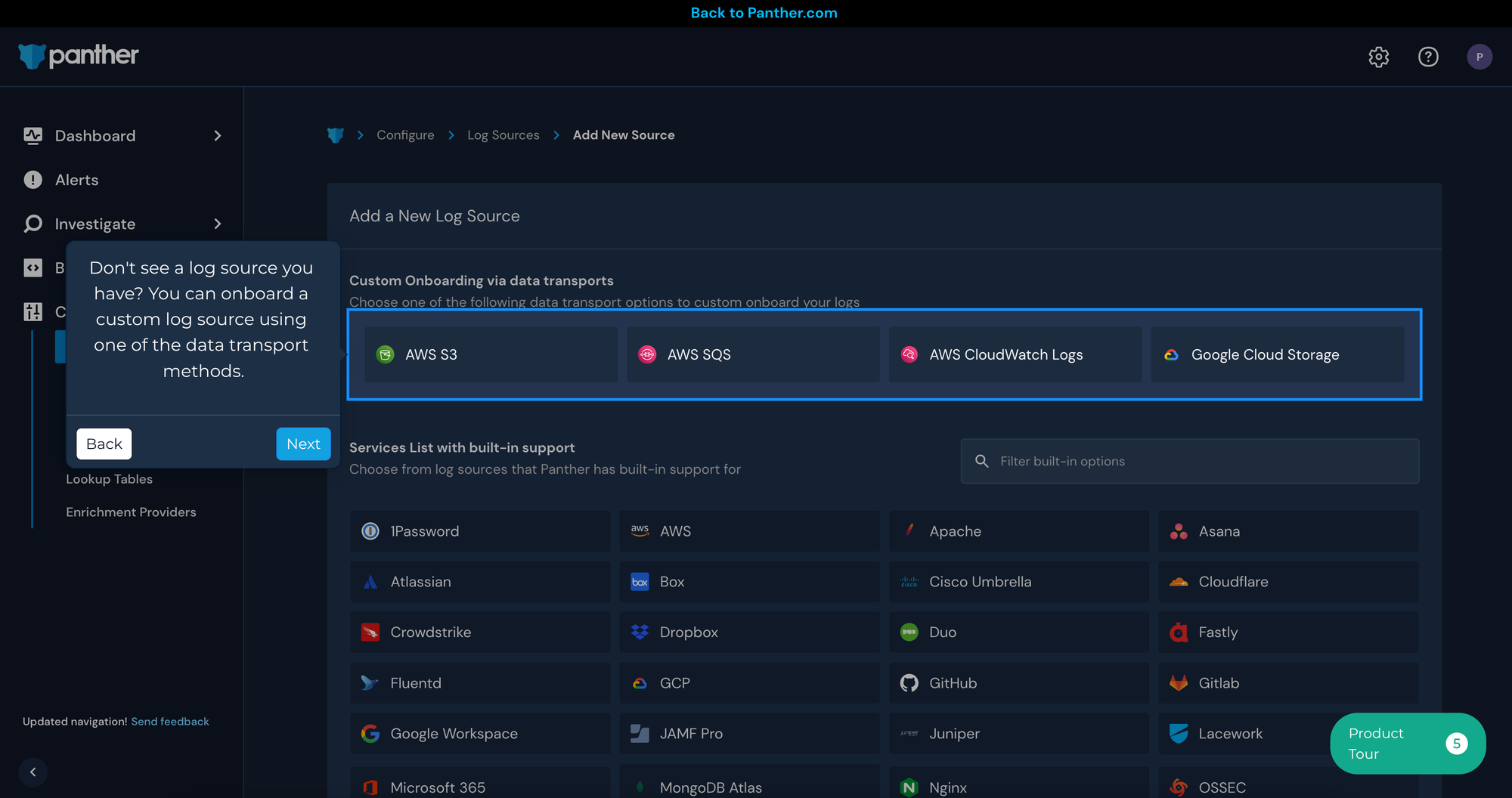
Pro Copywriter Tip #3: Focus on Benefits, Not Just Features
Sure, you love what your product does. And it can be tempting to rhyme off a list of features in your interactive demo — especially when those features are new.
However, in your enthusiasm, it can be easy to forget that your buyers are new to your product. They don’t know it the way you do.
Consequently, they may struggle to translate your favorite features into something meaningful for their workflowz
That’s why I remind my clients we also need to speak to the benefits of their product’s features. Do the same, and you’ll have an easier time connecting your demo users with the emotional value of your product, not just the logical appeal of what it does. Yes, buyers might eventually come to love all your features just as much as you do — but you can short-cut the process by explicitly telling them why they should care.
Repsly does well here — describing the results their demo users will see and not simply talking about what their product does. “In this interactive product tour, you will discover how our Remote Check-In feature can help Reps manage their day-to-day work and enable Managers to generate more accurate reporting for Rep visits.”
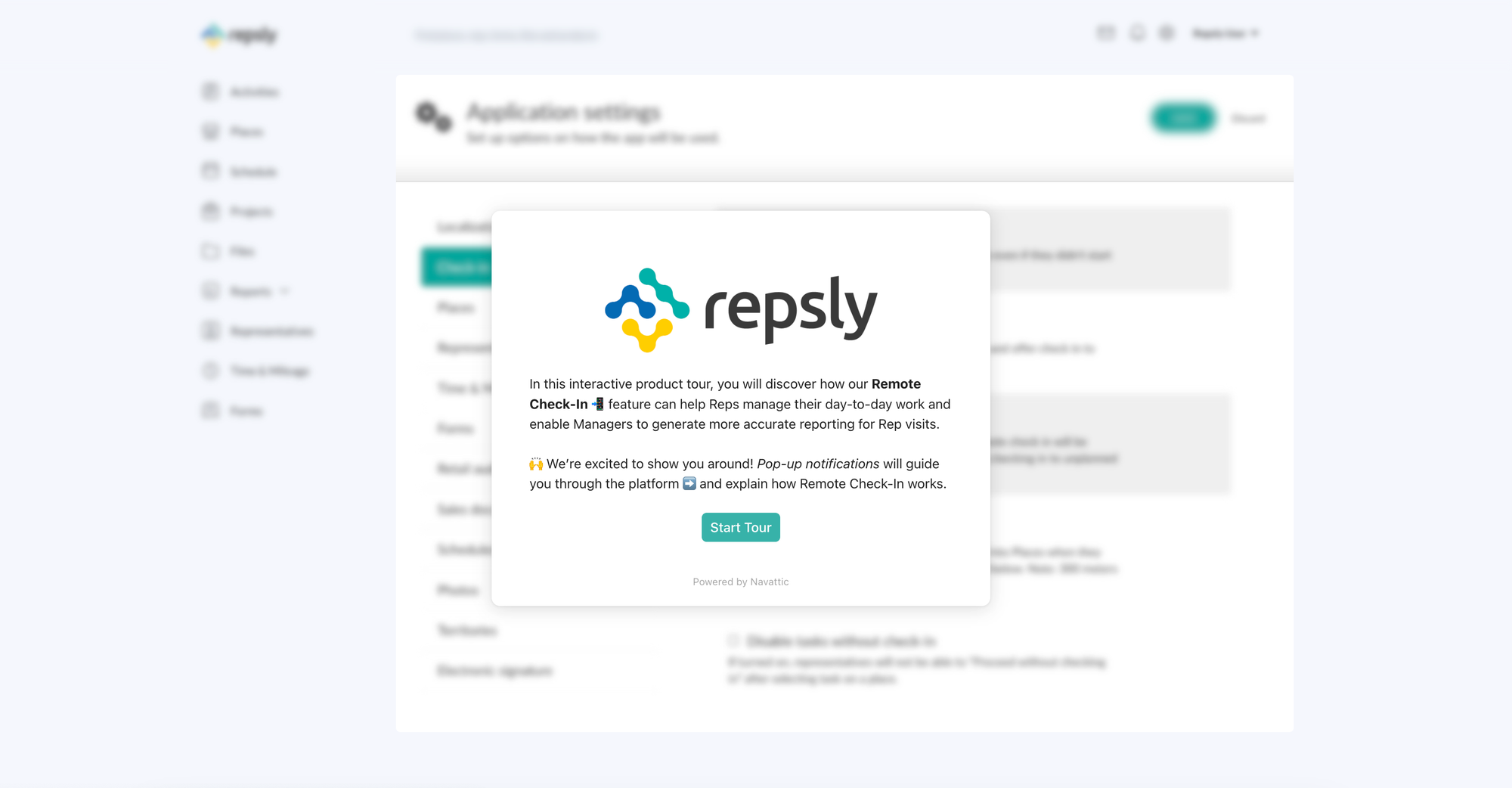
Pro Copywriter Tip #4: Don’t Forget the Pain Points
Let’s face it — humans are much more motivated by preventing pain than by gaining pleasure.
(Think about how hard you might work to make $50. Now consider what you’d do to keep someone from taking that same $50 from your wallet.)
In other words, remember to use your interactive demo to focus on the aggravation and irritation your product prevents — and not just on the efficiency or effectiveness it generates.
Now, you might cringe at the idea of drawing attention to the problems your reader is struggling with. But any good copywriter knows that gently agitating customer pains is remarkably effective.
Klue knows it too. That’s what they’re doing in their Navattic-powered demo with some subtle but effective word choices like “avoid missing urgent competitor news” and “so you never get blindsided.”
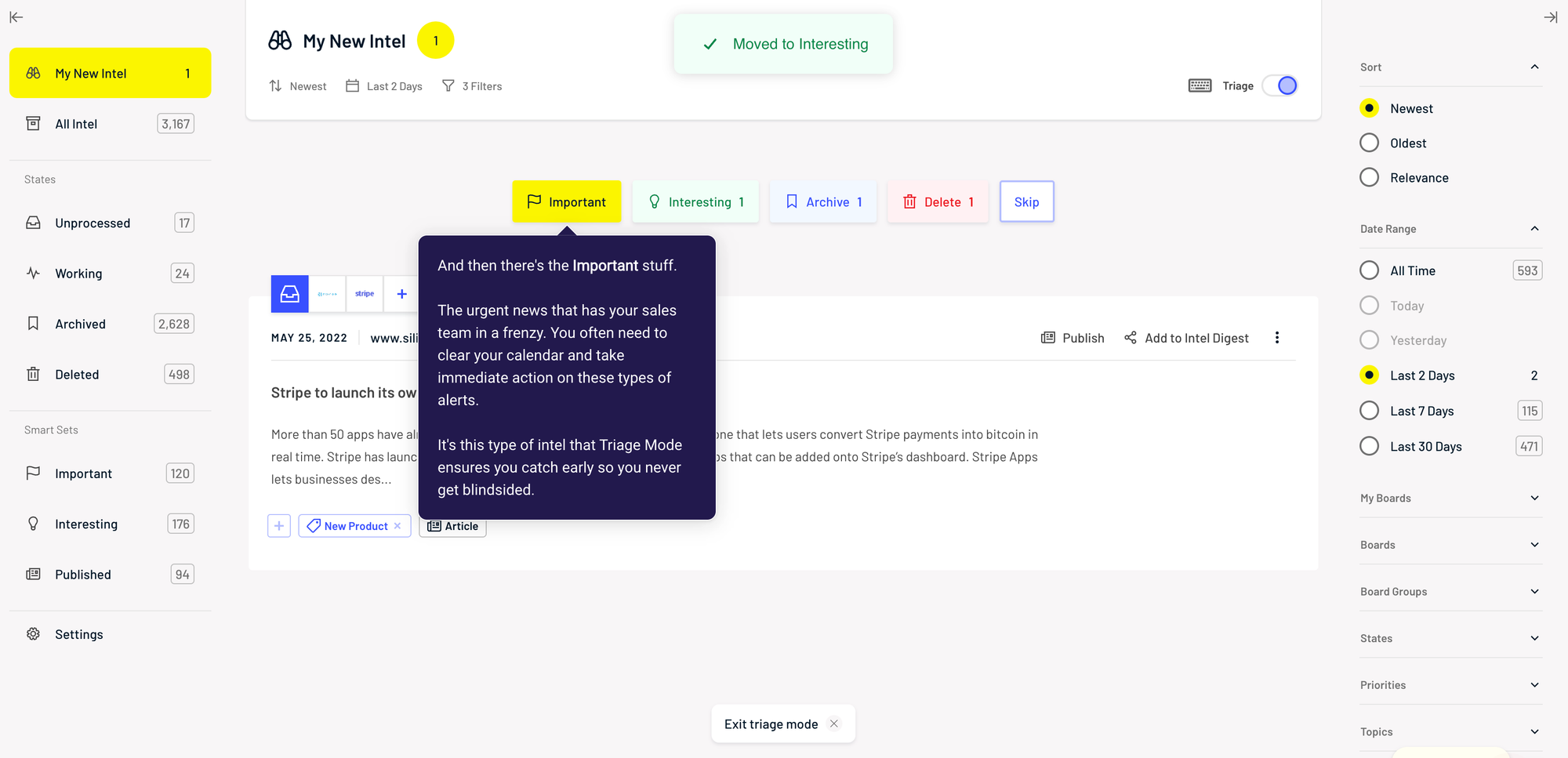
Pro Copywriter Tip #5: Use Stories, Don’t Just “Show and Tell”
For thousands of years, humans have loved stories.
Some scientists think this is because a story is a kind of pattern. For example, if I start a story with some version of “Once upon a time,” there’s a good chance it’ll end with “And they lived happily ever after” — a predictable turn of events that helps us find even just a little meaning in the face of chaos and confusion.
Stories also evoke emotion. They create connections, both between a storyteller and their audience and between audience members themselves.
That’s why copywriters like me love telling them. In an increasingly noisy world, wrapping a story around my marketing message can help my copy stand out.
Dooly seems to understand the power of a story to make their interactive demo more memorable and relatable — which is likely why they use story-based copy in their product tour. “Looks like we have a call with Melinda starting now... let’s dive in!”

Pro Copywriter Tip #6: Use Social Proof
When people are unsure of what to do, they often look to each other for clues. In other words, they check for consensus about how others think they should act or behave.
This is called social proof — and for a real-world example, imagine a laugh track on a bad television sitcom. If your brain hears other people laughing, you might start to think, “Maybe this show is funnier than I thought.” Soon enough, you might end up laughing despite yourself.
Copywriters don’t use laugh tracks, obviously. But we do take advantage of consensus-building techniques to help us create trust and sell more. Testimonial quotes, statistics, specific numbers… All of these can help prove to a tentative buyer that it’s logical — and safe — to take action.
Gorgias uses these techniques to maximum effect on the last screen of their product tour, including two pieces of social proof on the same call to action screen.
The first drops two customer names and a highly specific result: “Check out how Princess Polly and Timbuk2 reduced their response time by 95% with Gorgias.” The second mentions the thousands of ecommerce brands that use Gorgias every day.
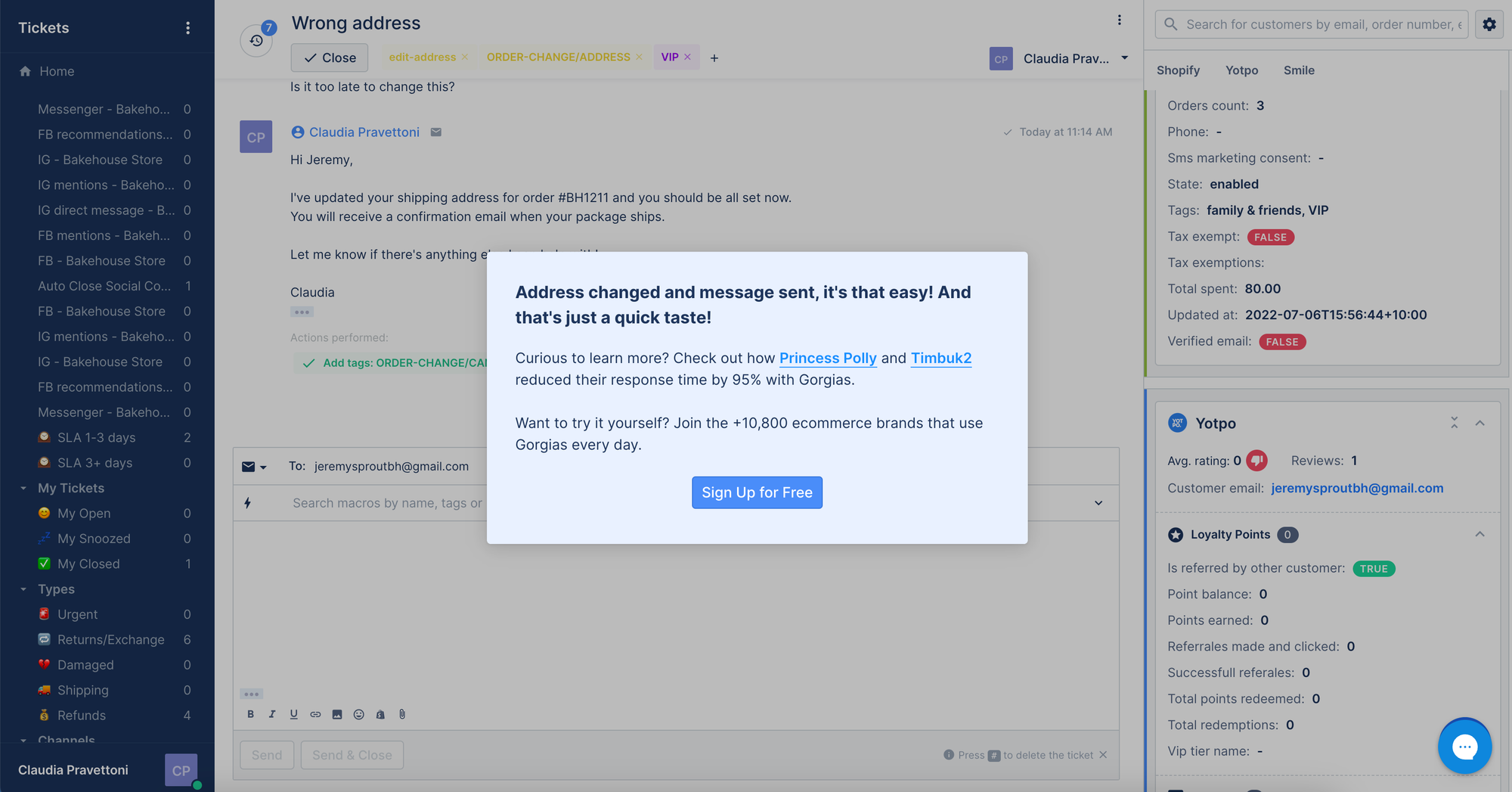
The Takeaway
If you’re stuck on how to script your Navattic demo, it can be easy to rely on a simple formula: introduce your product, show some of its best features, and then ask for the next action.
But the reality is that you can make your product tour much more effective by borrowing some of these techniques. Pro copywriters like me use them every day because they increase conversions.
And with these techniques in your toolbox, you can, too.
===
Aaron Wrixon is a copywriting expert who works with growing B2B SaaS companies that want to warm up leads, increase trials and demos, boost signups, and reduce churn.